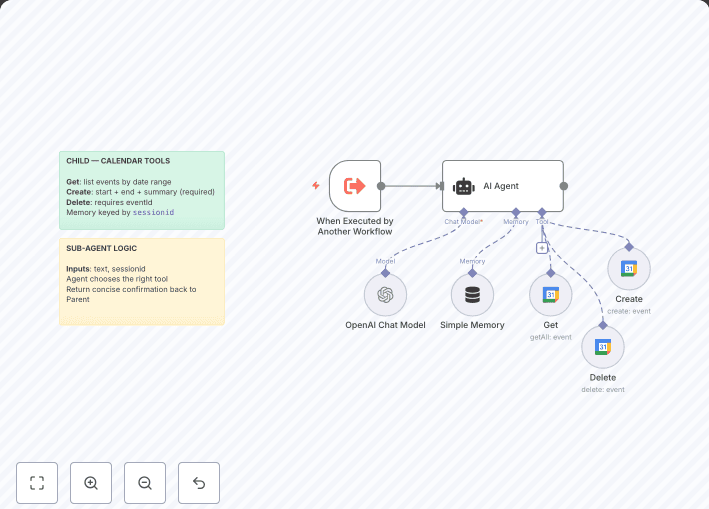This workflow uses the ibm-granite/granite-vision-3.3-2b model (hosted on Replicate) to generate AI images. It starts manually, sends a request to the Replicate API, waits for the result, and finally outputs the generated image link.
Think of it as your AI art assistant — you click once, and it handles the full request/response cycle for image generation.
🔗 Nodes:
💡 Beginner takeaway:
This section is like turning the key in the ignition. You start the workflow, and it loads your credentials so you can talk to Replicate’s API.
📈 Advantage:
Keeps your API key stored inside the workflow instead of hard-coding it everywhere.
🔗 Nodes:
granite-vision-3.3-2b) and input parameters (seed, temperature, max_tokens, etc.).💡 Beginner takeaway:
This is where the workflow actually asks the AI model to generate an image.
📈 Advantage:
You can tweak parameters like creativity (temperature) or randomness (seed) to control results.
🔗 Nodes:
Extract Prediction ID (Code) → Saves the unique job ID.
Wait (2s) → Pauses before checking status.
Check Prediction Status (HTTP Request) → Calls Replicate to see if the image is ready.
If Condition (Check If Complete) →
status = succeeded → move to result💡 Beginner takeaway:
Since image generation takes a few seconds, this section keeps asking the AI “are you done yet?” until the image is ready.
📈 Advantage:
No need to guess — the workflow waits automatically and retries until success.
🔗 Nodes:
Process Result (Code) → Extracts the final data:
💡 Beginner takeaway:
This section collects the finished image link and prepares it neatly for you.
📈 Advantage:
You get structured output that you can save, display, or use in another workflow (like auto-sending images to Slack or saving to Google Drive).
| Section | Nodes | Purpose | Benefit |
|---|---|---|---|
| 🟢 Trigger & Setup | Manual Trigger, Set API Key | Start + load credentials | Secure API key management |
| 🟦 Create Prediction | HTTP Request | Ask AI to generate image | Control creativity & output |
| 🟣 Polling | Extract ID, Wait, Check Status, If | Repeatedly check job status | Auto-wait until done |
| 🔵 Process Result | Process Result | Extract image + details | Get clean output for reuse |


